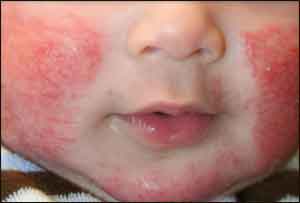- Home
- Editorial
- News
- Practice Guidelines
- Anesthesiology Guidelines
- Cancer Guidelines
- Cardiac Sciences Guidelines
- Critical Care Guidelines
- Dentistry Guidelines
- Dermatology Guidelines
- Diabetes and Endo Guidelines
- Diagnostics Guidelines
- ENT Guidelines
- Featured Practice Guidelines
- Gastroenterology Guidelines
- Geriatrics Guidelines
- Medicine Guidelines
- Nephrology Guidelines
- Neurosciences Guidelines
- Obs and Gynae Guidelines
- Ophthalmology Guidelines
- Orthopaedics Guidelines
- Paediatrics Guidelines
- Psychiatry Guidelines
- Pulmonology Guidelines
- Radiology Guidelines
- Surgery Guidelines
- Urology Guidelines
Topical propranolol effective in small infantile haemangiomas

Infantile haemangiomas are the most common tumour of infancy which in a majority of cases involute spontaneously. The first‐line treatment of Infantile haemangiomas is oral propranolol which has a risk of systemic adverse effects.
Price A and colleagues conducted a Systematic review and meta-analysis to investigate the role of topical preparations in Infantile haemangiomas and found that topical propranolol was effective in small, superficial haemangiomas. The findings have been published in Journal of the European Academy of Dermatology and Venereology
The researchers followed PRISMA guidelines and searched four databases to identify original articles evaluating the use of topical propranolol as the primary therapy for infantile haemangiomas. Twelve articles with a total of 597 patients and 632 haemangiomas were included. Three topical propranolol preparations were used, creams, ointments, and gels and were all prepared by local pharmaceutical laboratories. The concentration of propranolol ranged from 0.5% to 5% and the treatment duration ranged from two weeks to 16.5 months.
The researchers found that in all, 90% of lesions improved following the initiation of topical propranolol. A good or excellent response, defined as a reduction in the size of at least 50%, was seen in 59% of lesions. Earlier initiation of treatment (less than 3 months of age) was associated with improved outcomes.
There were no systemic adverse effects with only minor local reactions in 1.3% of patients. Topical propranolol is safer than oral propranolol, though may be less effective. It may be more suitable for patients with small, superficial haemangiomas at risk of cosmetic sequelae, where the cosmetic or symptomatic impact does not warrant oral propranolol treatment.

Disclaimer: This site is primarily intended for healthcare professionals. Any content/information on this website does not replace the advice of medical and/or health professionals and should not be construed as medical/diagnostic advice/endorsement or prescription. Use of this site is subject to our terms of use, privacy policy, advertisement policy. © 2020 Minerva Medical Treatment Pvt Ltd